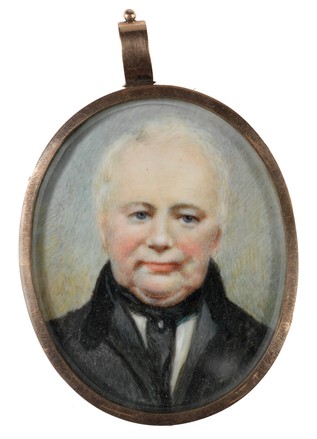
William Lawson
after 1846
MIN 63
Watercolour miniature on ivory
MIN 63
Watercolour miniature on ivory
William ‘Old Ironbark’ Lawson (1774-1850) was born in Finchley, England to Scottish parents. After training as a surveyor in London, he relocated to Australia in 1800, and settled in Sydney in 1806 where he was appointed to lieutenant. As with many officers at the time, Lawson developed an interest in agriculture, and like William Charles Wentworth and Gregory Blaxland, he wished to expand the capacity of his assets.
The successful crossing of the Blue Mountains in 1813 was the first of a long list of achievements for Lawson. In 1819, he was appointed commandant of the new settlement of Bathurst, and shortly after he discovered and opened the rich farming lands of Mudgee. By this time, Lawson had numerous estates spanning from Springwood to Mudgee. Here he bred quality imported stock from England such as Merino sheep, Shorthorn cattle and Thoroughbred horses.
It is likely that this portrait was painted in William Lawson’s later years, after all of his success. With a smile on his face, Lawson appears confident and satisfied with his achievements and the legacy of wealth and land holdings he amassed for his children and grandchildren. The image is probably a copy of an original 1845–46 daguerreotype by Australia’s first known professional photographer, George Goodman.


 Back to list
Back to list